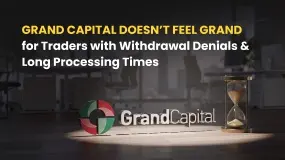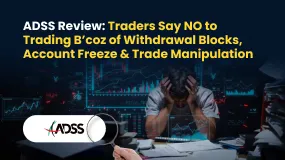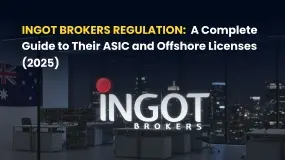简体中文
繁體中文
English
Pусский
日本語
ภาษาไทย
Tiếng Việt
Bahasa Indonesia
Español
हिन्दी
Filippiiniläinen
Français
Deutsch
Português
Türkçe
한국어
العربية
Forex Weekend Gaps | Tutorial with Weekend Gap Strategy?
Abstract:Forex weekend gaps refer to the price gap that occurs when the Forex market reopens on Monday after being closed over the weekend, due to new market developments or events. This gap represents the difference between the opening price on Monday and the closing price on the previous Friday. Such gaps can provide valuable insights into market sentiment, allowing seasoned traders to formulate sensible trading strategies based on different gap information.

As is well known, the foreign exchange market operates 24 hours a day, 5 days a week. However, most banks and financial institutions take weekends off, resulting in a lack of liquidity and trading activity in the forex market during this time. Therefore, forex trading platforms are typically closed during weekends.
Yet, the world during the weekend is not devoid of events. Sudden military conflicts, political developments, and significant economic news can all unfold over the weekend. For the forex market, these events, once they occur, often have a considerable impact on trader sentiment. Even in the absence of major events, normal shifts in trends or ongoing changes can influence market sentiment.
Consequently, after two days of the weekend, the opening price in the forex market on Monday typically does not align with the closing price of the previous Friday. This disparity is what we refer to as a forex weekend gap. Such gaps can offer valuable insights into market sentiment. Seasoned traders can devise sensible trading strategies based on different gap information.
So, what types of forex weekend gaps exist, and what are some reasonable strategies for trading these weekend gaps? Continue reading the text to find answers!
Types of Forex Weekend Gaps
For forex weekend trading strategies, there are three main types of trading gaps within the field of technical analysis.
Breakaway Gap
Occurs when the price deviates from a certain pattern or surpasses a crucial support or resistance level, leading to a breakaway gap.
Prices typically experience a strong momentum and often break free from a consolidation phase, leaving a gap.
One of the key features of a breakaway gap is its tendency to break through trading ranges or consolidation phases. The momentum following a breakaway gap is usually robust, potentially resulting in a parabolic price movement. Trading breakaway gaps often requires a significant level of skill for effective execution.

Continuation Gap
This type of gap occurs within a price pattern, indicating a surge in buying or selling where traders collectively believe in the market's direction.
Continuation gaps happen in the context of an existing trend. Some technical analysts refer to continuation gaps as runaway gaps. However, the implication is the same. In other words, after the market has been in a trend for at least some time, there will be a persistent upward gap if in an uptrend or a persistent downward gap if in a downtrend.

Exhaustion Gap
Appears when a price pattern is nearing its conclusion, signaling an attempt to reach a new high or low.
Exhaustion gaps are often accompanied by a sudden surge, with trading volume experiencing a significant and abrupt change. Essentially, no one else is entering the trade, causing prices to suddenly drop, marking the end of the trend.
After prolonged market fluctuations, exhaustion gaps emerge in the price trend. As the name suggests, they indicate that the price trend has exhausted itself. It's as if the market is making a final push, propelling the price further in the direction of the trend.

Forex Weekend Gap Strategy
Forex Weekend Gaps
As mentioned earlier, significant weekend market gaps in currency pairs can result from various factors such as politics, economics, and military events. Among these factors, we believe that unexpected news related to economic events has a relatively higher occurrence rate.
For instance, consider a scenario where the President of the United States and the Prime Minister of the United Kingdom hold a high-level meeting to discuss the future trade conditions between the two countries. This special meeting is scheduled for Saturday, a day when major financial market centers are essentially closed. Depending on the outcome of such meetings, the GBP/USD currency pair may experience a substantial impact when the market opens on Sunday night, potentially leading to a significant price surge or decline.
However, historical experience has taught us that, despite being aware of such significant economic events, predicting whether the market will react to these weekend events and the extent of that reaction is extremely challenging. Therefore, from a trading perspective, relying solely on weekend events to predict the direction and magnitude of forex market gaps for the upcoming week does not offer a viable trading strategy.
For example, even if there is a bearish event over the weekend, you might find an upward gap when the market opens on Monday, and vice versa. Trading opening gaps in this specific manner appears to lack any discernible advantage.

Weekend Gap Strategy
We will discuss a forex weekend gap strategy that doesn't rely on predicting future gaps but instead waits for gaps to occur and then trades around them.
Now, let's continue to construct a forex gap trading strategy based on weekend gap scenarios. Based on long-term historical data, we have found that the most liquid currency pairs, including EUR/USD, GBP/USD, and USD/JPY, form weekend gaps approximately 20% to 25% of the time over the past two decades.
This implies that, within a year, we anticipate around 10 to 12 potential gap trading opportunities for each of these major currency pairs.
We have also conducted statistics on the size of these gaps. According to historical data, about 75% of weekend forex currency pair gaps are relatively small, with the range of these smaller gaps being less than 30 pips. Approximately 25% of weekend gaps result in an opening price differing from the Friday closing price by more than 30 pips.
Upon analyzing the trends of currency pairs in these situations, we observe certain patterns. Relatively small gaps of 30 pips or less are more likely to be filled in the next few trading days. On the other hand, larger gaps of 30 pips or more are less likely to be filled and may instead lead to significant price fluctuations in the direction of the gap.
Furthermore, we have discovered that gaps occurring in the opposite direction of the trend in a trend background have a higher likelihood of being filled. For instance, when there is an upward trend and the market experiences a downward gap, there is a higher probability that the gap will be filled in the next few trading days. Similarly, upward gaps in a downtrend are more likely to be filled.

Based on our statistical data, combined with fundamental principles of financial markets and commonly used technical analysis tools, we can now formulate a simple weekend gap strategy.
Long Weekend Gap Trade Rules
The current price is above the 200-day simple moving average.
A weekend downward gap appears on the price chart with a magnitude greater than 20 pips but less than 40 pips.
Enter a market order and buy at the opening of the Sunday market in the Eastern Time Zone of the United States.
Set the stop-loss below the entry point, at a distance equal to the number of pips of the downward gap.
Set the target price to be one pip lower than Friday's closing price.
Short Weekend Gap Trade Rules
The current trading price is below the 200-day simple moving average.
A weekend upward gap appears on the price chart with a gap size greater than 20 pips but less than 40 pips.
Enter a market order and sell at the opening of the Sunday market in the Eastern Time Zone of the United States.
Set the stop-loss above the entry point, at a distance equal to the number of pips of the upward gap.
Set the target price to be one pip higher than Friday's closing price.
FAQs

What Causes Gaps?
Gaps can result from various factors, mostly considered as outcomes of unexpected news or technical breakthroughs in breaking support or resistance. From a fundamental perspective, news may include a company significantly surpassing profit expectations or speeches by Federal Reserve officials affecting interest rate expectations. On the technical side, gaps may occur after breaking previous highs/lows or other forms of technical resistance or support, such as key trendlines.
What is Gap Filling?
Gap filling refers to when the price returns to the entry range of the closing price of the previous week.
Should You Trade Forex Over the Weekend?
While traders cannot actively trade the forex market over the weekend, they can use this time to review market news and economic calendars to identify potential trading opportunities for the upcoming week.
Bottom Line
Forex weekend gap trading provides a trading strategy based on market sentiment and technical analysis. By understanding different types of gaps and their corresponding trading strategies, seasoned traders can leverage the price disparities formed by these gaps at the Monday market opening to identify trading opportunities.
Traders should decide whether to adopt the forex weekend gap trading strategy based on their individual risk preferences, market observations, and experience levels. When formulating strategies, reasonable profit-taking and stop-loss levels, along with a comprehensive understanding of market dynamics, are crucial for successful participation in such trades.
Disclaimer:
The views in this article only represent the author's personal views, and do not constitute investment advice on this platform. This platform does not guarantee the accuracy, completeness and timeliness of the information in the article, and will not be liable for any loss caused by the use of or reliance on the information in the article.
Read more

InterTrader Exposed: Traders Report Unfair Account Blocks, Profit Removal & Additional Fee for Withd
Does InterTrader block your forex trading account, giving inexplicable reasons? Does the broker flag you with latency trading and cancel all your profits? Do you have to pay additional fees for withdrawals? Did the UK-based forex broker fail to recognize the deposit you made? Does the customer service fail to address your trading queries? In this InterTrader review article, we have shared such complaints. Read them out.

Grand Capital Doesn’t Feel GRAND for Traders with Withdrawal Denials & Long Processing Times
The trading environment does not seem that rosy for traders at Grand Capital, a Seychelles-based forex broker. Traders’ requests for withdrawals are alleged to be in the review process for months, making them frustrated and helpless. Despite meeting the guidelines, traders find it hard to withdraw funds, as suggested by their complaints online. What’s also troubling traders are long processing times concerning Grand Capital withdrawals. In this Grand Capital review segment, we have shared some complaints for you to look at. Read on!

ADSS Review: Traders Say NO to Trading B’coz of Withdrawal Blocks, Account Freeze & Trade Issues
Does ADSS give you plenty of excuses to deny you access to withdrawals? Is your withdrawal request pending for months or years? Do you witness account freezes from the United Arab Emirates-based forex broker? Do you struggle to open and close your forex positions on the ADSS app? Does the customer support service fail to respond to your trading queries? All these issues have become a rage online. In this ADSS Broker review article, we have highlighted actual trader wordings on these issues. Keep reading!

INGOT Brokers Regulation 2025: ASIC vs Offshore License - What Traders Must Know
Explore INGOT Brokers regulation in 2025: Compare their ASIC and Seychelles FSA licenses, understand trader protection levels, and learn about potential risks in this detailed guide.
WikiFX Broker
Latest News
Mitrade Arabic Platform Targets MENA Gold Trading Boom
Israeli Arrested in Rome Over €50M Forex Scam
New FCA Consumer Alert 2025: Important Warning for All Consumers
EmiraX Markets Withdrawal Issues Exposed
Consob Targets Political Deepfake “Clone Sites” and Unlicensed Platforms in Latest Enforcement Round
WikiEXPO Global Expert Interviews: Gustavo Antonio Montero: ESG in Finance
Scam Alert: GINKGO-my.com is Draining Millions from Malaysians!
The Debt-Reduction Playbook: Can Today's Governments Learn From The Past?
Polymarket Onboards First US Users Since 2022 Shutdown: Beta Relaunch Signals Major Comeback
US Seizes US15 Billion in Bitcoin as Prince Group Rejects Crypto Scam Allegations
Currency Calculator



